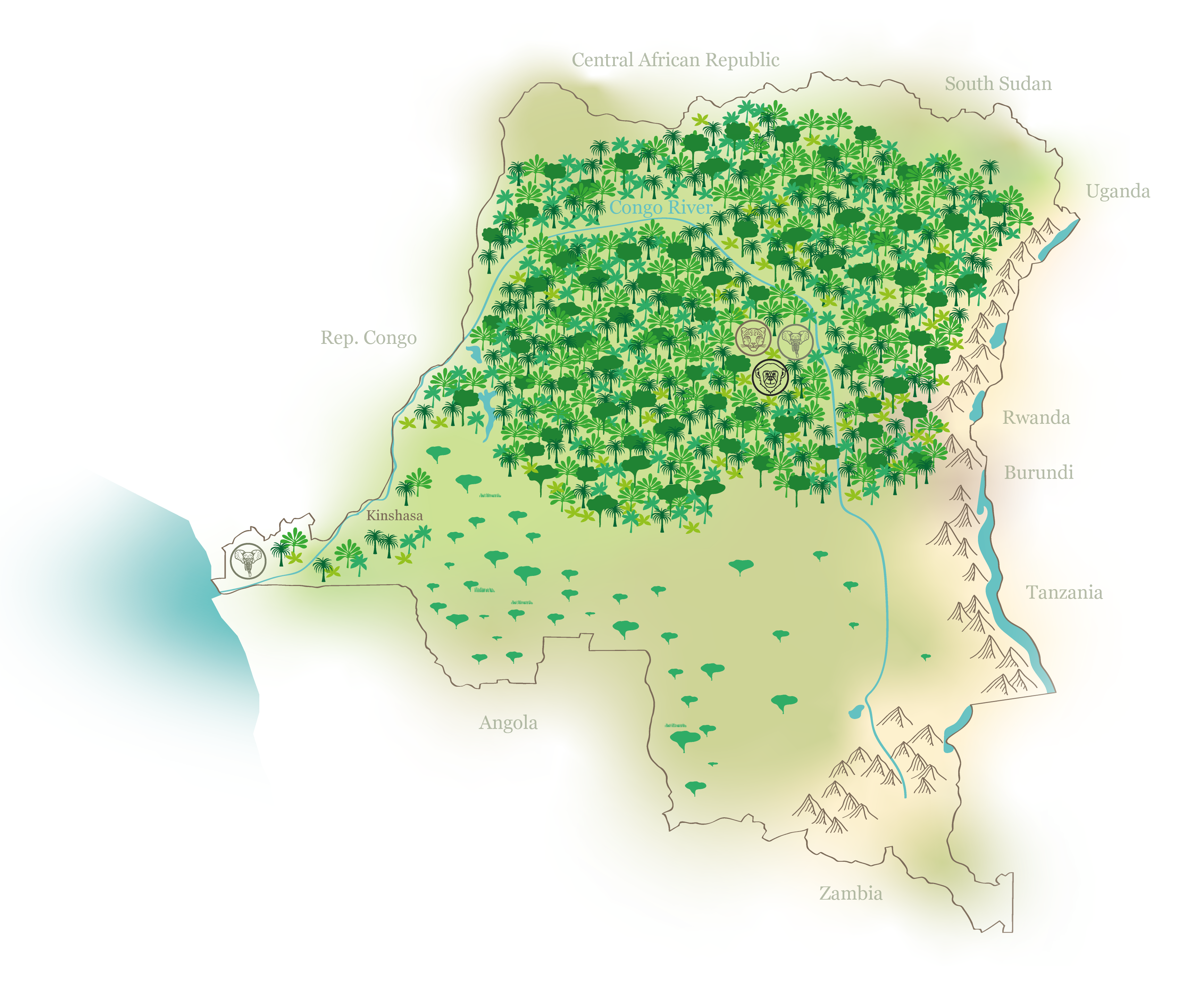African Forest Elephant facts
Population estimate up to: <30000 mature individuals
Distribution: ranging from Guinea Bissau at North-West, to the Democratic Republic of Congo, extending its highly fragmented distribution across the African equatorial forest.
Habitat preference: forest
Elevation: 0-2000
Generation length: 31 years
Weight: 2000-7000 kg
Other target species: Leopard (Panthera pardus), and all threatened forest species.
Project implementation country: Democratic Republic of Congo
Project Partners and supporters: Wildlife Initiative DRC, Wildlife Initiative Italia


The threats
The African continent hosts more than 30% of the planet's tropical forests, and in particular, the Congolese equatorial forest is an hotspot of biodiversity. In addition, this forest is estimated to be the principal absorber and sink of CO2 on the planet, albeit having a slightly smaller surface than the Amazon forest. Despite these valuable features, this forest is afflicted by deforestation.
The Democratic Republic of Congo (DRC) is the African state that exports the largest quantities of timber, generally sold to multinationals that re-sold it on the market as a "sustainable" cut. In the last 20 years, the intensity of deforestation has increased especially alongside the equatorial line. In the Province of Central Congo, we are witnessing the disappearance of the Atlantic Forest, which also leads to more conflicts between forest elephants (Loxodonta cyclotis), Critically Endangered in the Red List Assessment of the IUCN and local farmers. The exploitation of the forests has inevitably led to the disappearance of many species.
As a consequence of the internal conflicts due to the various militias scattered throughout the country (over a hundred), and the ineffectiveness of the international community in the enhancement and protection of the Congolese natural heritage, many species including the forest elephant are threatened.
Wildlife Initiative’s DRC headquarter has committed to 1) mitigate the most urgent conflicts between human and elephant in the Atlantic Congolese forest; 2) survey the terrestrial vertebrate fauna of the unexplored equatorial line in the unprotected territory Opala district.

WHAT WE DO...
Wildlife Initiative, and its partners, focus its effort in two areas of the Democratic Republic of Congo: the Atlantic forest of Lukula, and the equatorial unexplored forest of Opala. In the Atlantic forest we aim to mitigate the human-elephant conflict by preserving the ecological corridor for forest elephant that move through Angola. This project will consist in three steps: 1)an interview based survey to better understand the factors underpinning human-elephant conflicts; 2) preserve portion of forest by cutting (in agreement with the Ministry of Environment of DRC) and building “beehives-fences”, which keept the elephant away from crops; 3) create sustainable economic opportunities for families alternative to timber cutting. We buy the honey from them and we sell it to forest elephant supporters across the globe!
In Opala equatorial forest we will make an inventory of terrestrial vertebrates to study their ecology and behavior to plan appropriate conservation measures outside protected area. Likely, this forest still hosts unidentified mammals species, which need to be protected from un-sustainable human activities.

WHERE YOUR DONATION GOES?
Your donation will cover the project costs, including the purchase of beehives, corrals, and honey products from local families. Furthermore, your donation will be used to buy the equipment (such as camera traps, outdoor GPS receiver, etc.) needed to monitor and preserve the mammal species by poaching and other detriment human activities in the equatorial forest of Opala.
Forest elephants are important representatives of the natural heritage in these landscapes. We must preserve them for the new generations to thrive along them!












